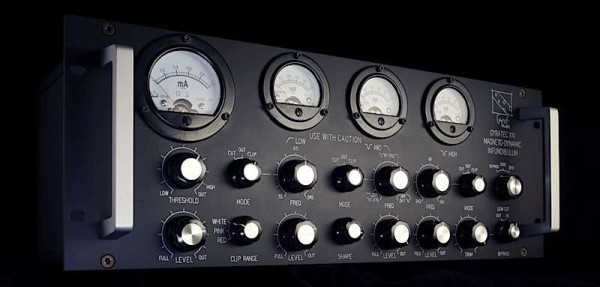
Gyraf Audio G21
Preise inkl. gesetzlicher MwSt. inkl. Versandkosten
wird für Euch bestellt, die genaue Lieferzeit bitte erfragen
- Artikel-Nr.: DA-i-1286
Vorteile
- Kostenloser Versand innerhalb der EU
- Versand lagernder Artikel innerhalb von 24h
- Premium After Sales Support
Gyraf Audio G21
The G21 is kinda an elaboration on our G14 parallel-passive eq - the parallel topology enables multi-band control without running into the traditional problems in multi-banding (i.e. the problem in phase at recombining)
Use carefully - this is in no way a fire-and-forget gadget: Multiple types of interacting nonlinearities are at large, even a few in macroscopic time-domain because of components heating and temperature coefficients. Changing something in one band will sure as hell result in something else showing up somewhere else. Feels organic in that.
Classic problem is that multi-banding gives inadequate results because of filter phase shift messing up recombining. We deal with this by NOT band-splitting, but in stead dealing with all frequencies in parallel fashion, only opening frequency-selective channels into the clipping circuitry. Byproduct of this is that spike/peak phase is altered first, only to be real-clipped if pushing the phase won't get the total signal below threshold. Kinda like an audio file hair-remover (work title of the G21 was "The AudioShaver")
As we all know, clipping generates harmonics - there's simply no way around that. But what you do with those harmonics will make a lot of difference. The beauty is here, that as the clipping is done at the remote end of a frequency selective channel, the clipping byproducts (harmonics, at frequencies multiple times the clipped) have a hard time getting back out and into the audio, because they are now no more in the right frequency range..
And other than the three bands of clipping, we have an overall clipper that can be set for linear (white), pink -3dB/oct or red -5dB/oct emphasis - enabling gradually lower "threshold" at higher frequencies.
Then there's a fine-trim for output level and a 18dB/oct lowcut at the input - mainly because most of our test pilots were mastering engineers :-)

